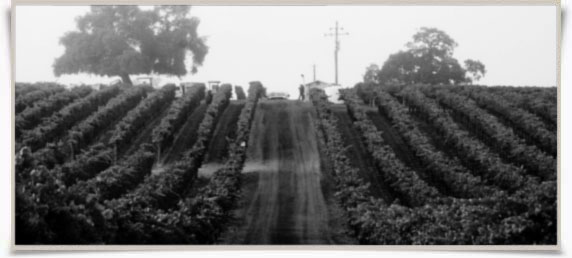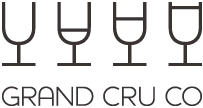A brief look at the past week in wine...
Chile fires: 100-year-old vines lost in ‘national catastrophe’
The viticultural fallout of the forest fires still raging in Chile has begun to emerge, with century-old vineyards burnt to cinders and small producers worst affected.
So far, more than 100 vineyards in Maule have been reportedly damaged by fires and approximately five hectares of vineyards have been destroyed in Colchagua as the fires continue to spread. The government has declared a state of emergency in some central regions. Many dry-farmed vineyards and adobe wineries in Maule’s ‘secano interior’ have been caught in a path of destruction as surrounding forests burn.
Cancha Alegre winemaker Sergio Amigo Quevedo lost six hectares of 120-year-old vines at the weekend. ‘It is hard to believe that those vines, which you have taken care of with such love and sacrifice, are lost, along with part of the viticultural patrimony of Chile, because of a voracious fire caused by careless men. It is a tremendous pain to lose these ancient vines that we bought in 2008 to preserve them from turning into a forest.’
The fires have been particularly ferocious in Maule. where controversial government-backed forestation plans have resulted in dense plantations of highly-flammable eucalyptus and pine trees. Firefighters reported temperatures reaching over 100°C and many neighbouring homes were without power because cables melted.
Diego Morales, of Bisogno Wines, lost his 25 hectare vineyard with 150-year-old Pais vines, which was surrounded by forests.
He said ‘By Saturday morning we could see that it was imminent… We made fire blocks, but nothing was enough. Our priority was saving the house.’ Morales and his family fought the fire themselves, suffering burns while throwing buckets of water at the fire approaching from all directions.
‘The firefighters were so overloaded that they arrived five hours after the fire had passed… These aren’t just forest fires, Cauquenes is a rural area where people live among forests, animals and vineyards. What burnt here was a cultural patrimony of more than 200 years. The authorities always minimise [these problems] and don’t react on time… I hope we can value our history and culture before this type of event happens again.’
After several weeks of uncontrollable fires in Chile’s Central Valley, President Bachelet declared a state of catastrophe on 20 January, calling it ‘the worst forestry disaster in our history’. Peru, Mexico and Spain have sent have sent aid to combat the wild fires currently threatening 450,000 hectares of agricultural land between Colchagua and Maule.
Producers of banned ‘blue wine’ appeal for law change
The company’s original marketing suggests that it was aware of a potential backlash, describing its brightly coloured liquid as ‘revolutionising the world of wine with a blasphemous drink’.
Gïk Blue includes red and white wine grapes from Spain’s Castilla La Mancha and Rioja regions, and the company infuses these with a plant-based dye plus sweeteners.
The company launched an online petition in the UK via Change.org in order to create a new product category for blue wine.
However, only 39 people had signed by midday on Monday 23 January.
‘In order to continue selling, we have been forced to stop labelling Gïk as a wine. Instead, we had to label it as a category named “Other alcoholic drinks”,’ the petition says.
Pre-orders begin for second vintage of Queen’s English wine
The 2013 vintage was sold only as a three bottle set, costing £75, and released in time for Christmas. It quickly sold out, according to merchants.
The Windsor Vineyard 2014 vintage is due to be released this autumn, at £35 for an individual bottle, and can already be pre-ordered.
Fewer than 2,000 bottles were available for the first vintage, but volumes have not been confirmed for 2014.
The fast sales of the 2013 vintage echo strong momentum for English sparkling wine as a whole over the Christmas and New Year period.
The sparkling wine is made from the traditional Champagne varieties – Chardonnay, Pinot Noir, Pinot Meunier – which were grown on the Windsor Great Park estate.
The wine was then made at Ridgeview, in Sussex, and is managed by Laithwaite’s Wine.
Laithwaite’s was given permission in 2011, by The Crown Estate and Royal Farms, to plant a vineyard in Windsor Great Park, reviving an almost 1000 year tradition of grape growing there, Laithwaite’s revealed.
Prince Charles is the head of the Great Park estate and has been very involved with the project, according to Laithwaite’s.
David Thatcher, CEO of Laithwaite’s Wine said, ‘We are delighted to be working with the vineyard to revive their once great tradition, and are equally pleased that it has proved so popular amongst our customers. We look forward to releasing the second vintage later this year.’
The Queen has previously served Ridgeview wines at state occasions, including at the banquet dinner for Xi Jinping at Bunckingham Palace, and to US President Barack Obama in 2011.
Ridgeview was also named as the official wine of Downing Street in 2016.
Angry French winemakers attack Spanish lorries, block depot
Sixty protesters block supermarket-owned depot near Nîmes. They then attacked a tanker suspected of carrying Spanish wine
Protesters claiming allegiance to militant group CRAV – or CAV – dump Spanish wine in shopping centre car park. Several protests took place in France’s Languedoc-Roussillon region on Tuesday (17 January) against cheap Spanish wine imports.
At around 6:30 am, 60 winegrowers blocked the entrance to Prodis, the wine subsidiary of the Carrefour supermarket group, in Grizan near Nîmes. The site is known to be used for producing bag-in-box wines.
Some protesters then went to the motorway toll of Gallargues-le-Monteux, 25 km from Nîmes, to find lorries containing Spanish wine.
A single lorry was found and its contents dumped on the highway. They were protesting against ‘unfair competition’, according to Anaïs Amalric, co-president of Jeunes Agriculteurs du Gard.‘These Spanish imports prevent us from selling our French products,’ Amalric said. 'Our tanks are full, prices are falling and wine merchants are asking us to lower prices. This is unacceptable,’ she said.
In parallel, further south in Narbonne, militant winemaker group CAV has claimed responsibility for 10 winegrowers dumping nearly 25,000 litres of Spanish wine from another lorry in a shopping centre car park. The letters ‘CAV’ were found in the car park and on the truck, according to Agence France Presse. Also known as CRAV, the group has intermittently attacked foreign wine installations in Languedoc for several decades.
Tensions are rising in the vineyard and protests are multiplying, as the region gears up to host the Vinisud trade show.‘We have not planned any actions for Vinisud,’ Amalric said.
‘Not for the moment. But we know that some independent winegrowers [selling bottles, not bulk wine] also want to take action and join us in this battle against unfair competition. ’Last year, several wine industry leaders in Languedoc sounded the alarm over cheap Spanish imports. Some producers also hijacked lorries and attacked depots, but local unions officially condemned the violence.
Critics have said that French winemakers must accept competition from other EU member states. But some Languedoc winemakers claim that fewer taxes in Spain make competition unfair.




